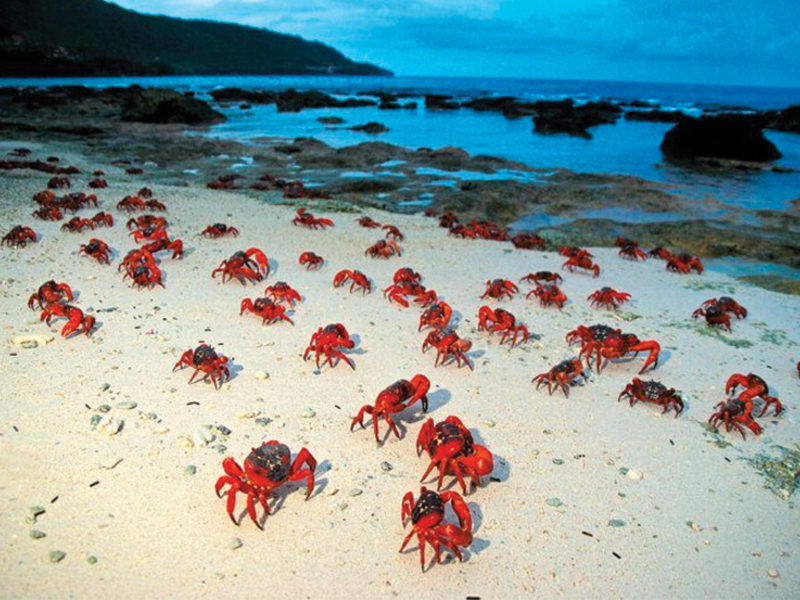Known as The Galapagos of the Indian Ocean, Christmas Island is home to at least 24 species found nowhere else on the planet – that’s more than any other Australian protected area. These include larger-than-life seabirds and the island’s red land crab whose extraordinary annual migration was recently voted by naturalist Sir David Attenborough as one of his top ten nature experiences of all time.
Strap on a snorkel and mask and plunge into an underwater Garden of Eden where you can eyeball up to 170 species of tropical fish and countless colourful coral. A couple of hundred metres off shore, the shallow sea floor dramatically drops off to a depth of over 2.5km, providing for spectacular wall diving. You’ll find no crowds here, just a couple of friendly whale sharks to welcome you into the deep blue yonder.

Top three back-to-nature events on Christmas Island
Bird ’n’ Nature Week: Expert guides, daily field trips, small groups, and extraordinary birdlife. First week of September.
Red Crab Migration: Be amazed by millions of endemic land crabs turning the island red as they stop for nothing on their annual mating migration. November to January – exact times vary.
Dive with whale sharks: Christmas Island is the only place in Australia where you can swim and scuba dive with these majestic beasts of the deep. November to April.

Facts about Christmas Island
Where is Christmas Island? Christmas Island is a dot in the Indian Ocean, located 2,600km northwest of Perth, Western Australia. Even though it is an Australian Territory, its closest neighbour is Java, 360km away.
Visas: Australian visa required
Getting There: Four flights weekly from Perth; one flight weekly from Jakarta
Flight Time: 3 hours 45 minutes from Perth; 50 minutes from Jakarta
Time Zone: Christmas Island is 7 hours ahead of GMT
Size: 135 square kilometres
Currency: Australian dollar
Did you know? Christmas Island is named after the day of its discovery in 1643
Don't miss out on the latest events, news and
competitions by signing up to our newsletter!
By signing up, you'll receive our weekly newsletter and offers which you can update or unsubscribe to anytime.



